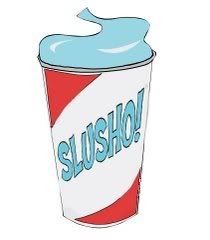Experince a day in the life of a YMR (YOSHIDA MEDICAL RESEARCH) scientist
 One of Tagruato's subsidiaries is YMR (YOSHIDA MEDICAL RESEARCH) which conducts medical studies.
One of Tagruato's subsidiaries is YMR (YOSHIDA MEDICAL RESEARCH) which conducts medical studies.According to their website on Tagruato, YMR " is a genetic research firm specializing in deep sea bioprospecting. YMR implements Tagruato's advanced exploration technology to study extremophiles found only in the deepest parts of our oceans."
Here's a blog entry from Dr. Hiro Takahashi on his day at work at YMR. (source)
Experince a day in the life of a YMR scientist
Hello! In the morning I wake up and I go to work!At work, samples excavated from the ocean floor are brought back to the lab and spread out on a Petri dish containing some 'media': Nutrients for growth that are combined with agar to form a solid surface! Bacteria that were present in the samples will then grow on the dish, forming a 'colony': Generally a small circle of billions of cells that all started from a single cell/spore in the sample! Each individual colony is then transferred to its own plate and grown so that you have a pure isolate: A pure strain of one bacterial type! Once we have those, they are transferred to a liquid media (also contains nutrients, but no agar, so it stays liquid) and grown in an incubator (keeps bacteria warm and shakes them to aerate the media).
This is called liquid fermentation! Whatever chemical compounds the bacteria might produce are often secreted from the inside of the cells into the surrounding liquid media. Afterwards we extract these compounds from the liquid media using a resin that broadly absorbs most compounds that would be interesting! This resin is then washed with organic solvents which transfers all these interesting compounds from the resin into the organic solvents. Organic solvents are things like ethanol, or acetone (in nail polish remover), dichloromethane (in paint thinner), etc.! These solvent washes, which now contain the compounds produced by the bacteria during fermentation, can then be concentrated and this produces a "crude extract": It contains a whole lot of compounds that were either produced by the bacteria or were present in the liquid media to begin with!
This crude extract (we generate thousands of extracts each year) is then tested in a screen to see if it has any interesting bioactivity! For example, somebody might develop a screen to see if a compound kills cancer cells. A simplified method might involve something like putting cancer cells into a dish, adding this crude extract, and then observing whether or not the cancer cells survive. In a real setting this would be very high throughput...each "dish" would be a tiny 'well' (about the volume of a few drops of water) arrayed in a 'plate'...a rectangular piece of plastic that contains a grid of these wells (usually plates contain 96, 384, or 1536 wells). So then each well of each plate would contain a few drops of a suspension of cancer cells. We add a different extract to each well and see if cancer cells live or die! This way you can screen thousands of compounds very quickly.
You could also do this to look for new antibiotics! Instead of putting cancer cells into each well, you'd put some sort of pathogenic bacteria that you want a new antibiotic against. In reality these screens often end up being a lot more complicated because people don't just want to kill cancer or bacteria cells outright (often these compounds would be toxic to regular human cells too), so they develop a screen that targets something really specific, like a particular protein involved in cancer pathways or something!
If one of these crude extracts turns up as a 'hit' on a screen, we then go about finding out what the specific compound is in the extract that's responsible for this interesting bioactivity! Remember that the crude extract contained everything the bacteria made, which can be hundreds to thousands of compounds. To do this, we perform a fractionation of the crude extract, in which these hundreds of compounds in a single extract are separated based on their chemical properties. This generates a series of fractions, so let’s say I had an extract with a thousand compounds that I separated into 100 fractions.
Now each fraction contains maybe 10 compounds. Each of these fractions is then rescreened, and hopefully we find that the bioactivity is in a particular fraction. Now we know the active compound is one of 10! We then repeat this fractionation process on these 10 compounds, rescreen them and find the active one, and then identify what that compound is. If it's a new compound, somebody would go about studying whether or not it could be a useful drug. So for example, using the screen, we might know that the compound kills pathogenic bacteria, but it wouldn't be a useful drug if it's too toxic to people, or gets broken down in the body too quickly, things like that! This might involve a “clinical trial”: Trying the drug on real people after it's been through plenty of tests and development!
After work, I go home and dine with my wife Akemi! Then I go to bed!
What is Cloverfield?
Welcome to 1-18-08 Project Cloverfield Blog.
Cloverfield is the J.J. Abrams (Lost, Alias) produced monster flick directed by Matt Reeves. Get caught up on all the Cloverfield news including the viral world of Tagruato, TIDOwave, and Slusho!? And now Aladygma?
However, I love viral campaigns. Cloverfield taught me the fun of being involved with the viral world of movies and TV. That's why I'd like to branch out this site to cover some of the major viral campaigns as they are developing. Feel free to drop me a line or tip on any you find interesting.
Welcome to Cloverfield
A few pictures and covert videos from the film showed up online and there were only a few core facts we knew of including the poster, the teaser trailer, and a few websites at 1-18-08, Tagruato Corp, and Slusho .
In November, the official full-length Cloverfield trailer was released that helped open up the story as well as cement the "Cloverfield" name for the movie. A short glimpse of the Cloverfield Monster was seen but for most people they still had little or no clue as to what it was.
The movie centered around five young New Yorkers throwing their friend a going-away party the night that a monster the size of a skyscraper descends upon the city. Told from the point of view of their video camera, the film is a document of their attempt to survive the most surreal, horrifying event of their lives. Cloverfield opened the weekend of 1-18-08 and set box office records for a movie in January with a monster take of over $40M. Continue to check back here for updates on the mystery and viral campaigns of Cloverfield.Contact Me

Contact me
Get Started with the Cloverfield Viral Marketing
What does viral marketing mean? Click here.
1-18-08.com Updates with pictures randomly. Each picture is layered onto of the previous update and all can be dragged and moved around the screen. Click and hold the mouse to 'grab' an image and move it around. While holding the image, shake it back and forth quickly and it will flip over. Some images have writing on the back.
Slusho This is the Japanese frozen drink made from a secret ingredient gathered from the bottom of the ocean. Slusho gives you a kick and makes you extremely happy. Prior to 1-18-08 Slusho was not sold in the US. However, recent FDA approval gave Slusho clearance to come to the states. Rob Hawkins, the lead character, was recently promoted to vice-president of Slusho and was on his way to Japan the night of the attack. Slusho is owned by the Tagruato Corp. of Japan. Slusho also first made an appearance on J.J. Abrams Alias during a scene where characters buy the drink at a store.
Tagruato This ficticious Japanese company is the parent company of Slusho as well as the Yoshida Medical Research, Bold Futura, and ParafFUN! Wax Distributors. Besides drilling the oceans for Slusho ingredients, Tagruato builds everything from space satellites to medical gear.
T.I.D.O wave An activist group set out to bring to light all the damage Tagruato has done to the envirnoment.
Jamie and Teddy A minor character from the movie, Jamie popped up on a 1-18-08.com picture and the MySpace profiles for the movies characters before getting famous for her "Jamie and Teddy" website. The site is comprised of video journals from Jamie. The site is password protected but can be accessed by the password "jllovesth"
Cloverfield Poster
Blogroll
About Me

- Dave and Thomas
- Submit a link here, contact us, or just send us a dirty pic!
Blog Archive
- January 2009 (1)
- November 2008 (1)
- October 2008 (1)
- July 2008 (1)
- June 2008 (5)
- May 2008 (25)
- April 2008 (34)
- March 2008 (22)
- February 2008 (31)
- January 2008 (112)
- December 2007 (41)
- November 2007 (25)
- October 2007 (14)
- September 2007 (8)
- August 2007 (29)
- July 2007 (30)
Labels
- [Rec] (1)
- 1-18-08 (177)
- 1-18-08 cast (7)
- 1-18-08 movie (29)
- 1-18-08 spoilers (7)
- 1-18-08 trailer (17)
- 9/11 (4)
- aaron eckhart (1)
- Aladygma (4)
- anna torv (1)
- arg (1)
- bad robot (36)
- batman (15)
- batman poster (2)
- batman viral (9)
- Beowulf (7)
- Blair Witch Project (3)
- blu-ray (4)
- bold futura (1)
- bryan burk (1)
- c (1)
- Case 1017 (1)
- charlie dark knight guru (2)
- Chuai Station (7)
- chud (1)
- cl (1)
- clo (1)
- cloverfield (241)
- cloverfield 2 (14)
- cloverfield ads (31)
- cloverfield bluray (3)
- cloverfield box office (6)
- cloverfield cast (52)
- cloverfield clues (52)
- cloverfield collectibles (2)
- Cloverfield Commercial (13)
- cloverfield debate (10)
- cloverfield dvd (18)
- cloverfield ending (9)
- cloverfield files (1)
- cloverfield international (7)
- cloverfield international release dates (3)
- cloverfield magna (2)
- cloverfield manga (1)
- cloverfield merchandise (1)
- cloverfield monster (99)
- cloverfield monster images (1)
- cloverfield monster pictures (2)
- Cloverfield Monster toy (2)
- Cloverfield Monsters (19)
- cloverfield movide (1)
- cloverfield movie (60)
- Cloverfield movie review (13)
- cloverfield mysteries (1)
- cloverfield parody (1)
- cloverfield photos (5)
- cloverfield poster (15)
- cloverfield screenings (14)
- cloverfield sequel (8)
- cloverfield shirts (1)
- cloverfield soundtrack (2)
- cloverfield spoilers (53)
- cloverfield toys (2)
- cloverfield trailer (60)
- cloverfield videos (24)
- cloverfield viral (14)
- cloverfieldmovie.com (12)
- comic (2)
- Corporate Headquarters (1)
- dark knight trailer (3)
- dark knight viral (5)
- dave and thomas (2)
- dollhouse (3)
- drew goddard (2)
- enterprise (1)
- Eric Brody (1)
- ethan haas (3)
- Ethan Hass (15)
- facebook (2)
- firefly (1)
- first tuesday (1)
- flight 815 (1)
- fox (1)
- fox news (1)
- france (1)
- fringe (8)
- FTWSPACE (1)
- gene roddenberry (1)
- godzilla (1)
- Gotham Police Department (2)
- gotham times (1)
- gpdmcu (1)
- grand theft auto iv (1)
- graphic novel (1)
- greg grunberg (2)
- gta iv (1)
- Hakaisha (1)
- hancock (1)
- hanso (2)
- harvey dent (2)
- Heroes (2)
- hobo army (1)
- hud (1)
- humor (2)
- i am legend (1)
- images (1)
- indiana jones (1)
- indiana jones and the kingdom of the crystal skull (1)
- j.j. abrams (7)
- jamie and teddy (21)
- japan (3)
- jessica lucas (1)
- JJ Abrams (85)
- john locke (1)
- joker (2)
- joshua jackson (3)
- joss whedon (3)
- Leonard Nimoy (1)
- leviathan (8)
- Lizzy Caplan (6)
- Lost (24)
- Lost Easter Eggs (5)
- lost viral (6)
- lostscape (1)
- matt reeves (12)
- matthew fox (2)
- media (1)
- Michael Stahl-David (2)
- Monstrous (43)
- movies (1)
- myspace (3)
- nbc (1)
- new movies (6)
- new york (2)
- nightshot (1)
- norkio yoshida (3)
- oceanic air (3)
- Overnight (28)
- Parasite (41)
- phil tippett (1)
- posters (1)
- Quarantine (1)
- reviews (2)
- Rob Hawkins (3)
- satellite (1)
- september 11 (2)
- simon pegg (1)
- Slusho (77)
- south park (1)
- Soylent Green (1)
- speed racer (2)
- star trek (21)
- star trek viral (4)
- statue of liberty (4)
- t (1)
- T.I.D.O (7)
- Tagruato (47)
- tagruato subsidiaries (2)
- taste for theatrical (1)
- teddy hanssen (3)
- terry oquinn (1)
- the dark knight (18)
- the host (1)
- The Little Whale (4)
- tidowave (6)
- tj miller (1)
- tom cruise (1)
- unfiction (3)
- video games (1)
- viral (1)
- viral advertising (23)
- viral video (1)
- Voltron (2)
- wreck (1)
- x files (2)
- x-files (1)
- x-files 2 (2)
- X-Files: I Want To Believe (1)
- ymr (1)
- yoshida medical research (1)
- youtube (2)
- zombies (1)








0 comments:
Post a Comment